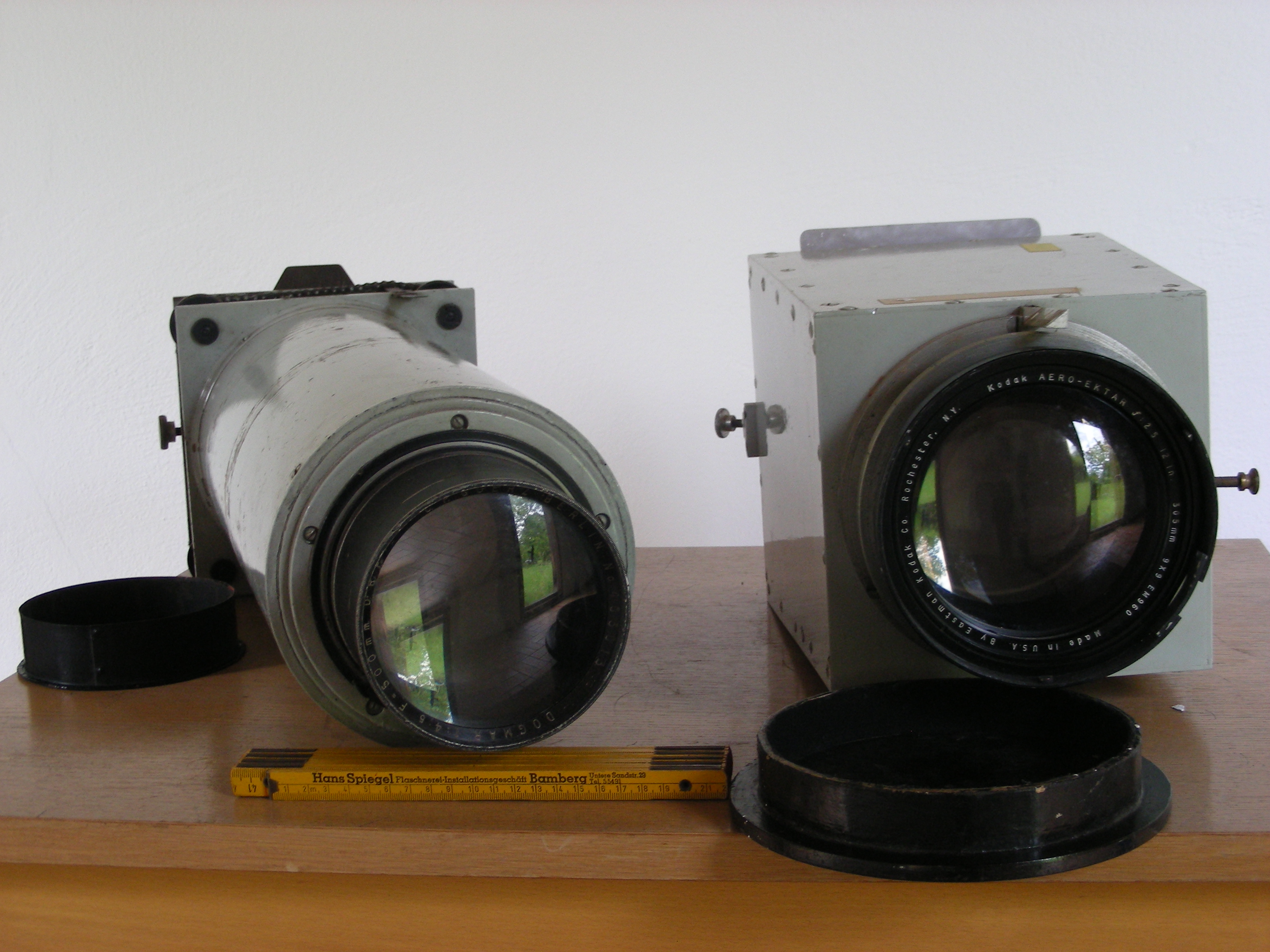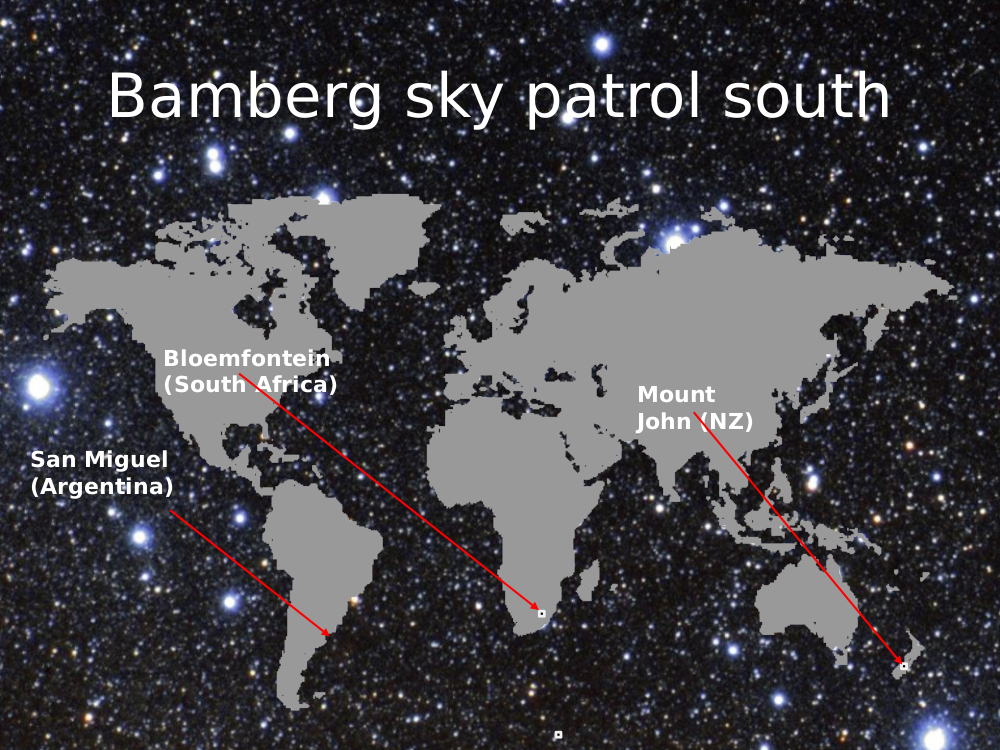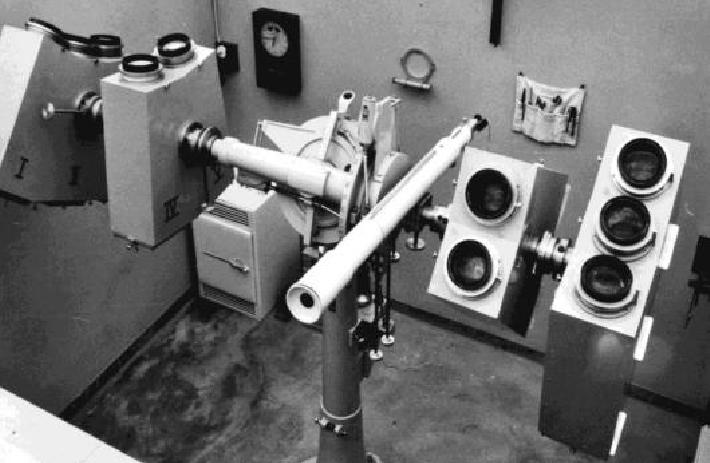Bamberg Telescopes and Instruments
Two major sky patrol projects were carried out by the Dr. Remeis-Observatory (Bamberg):
The Northern sky was monitored from 1926 to 1939 in Bamberg, whereas monitoring the Southern Sky was carried out between 1962 and 1976 from Boyden Observatory (South Africa), Mount John (New Zeeland) and San Miguel Observatory (Argentina).
The Northern Sky Patrol

The Bamberg Northern Sky Survey was part of an observational Programme initiated by Paul Guthnick to study variable stars in the Northern hemisphere. Three German observatories teamed up for this task: Berlin-Babelsberg (lead by Guthnick), Sonneberg (C. Hoffmeister) and the Dr. Remeis-Observatory in Bamberg (E. Zinner). The intention was to cover the Sky devided in 30 degree zones with identical Ernostar telescopes (aperture 13.5cm, focal length 24 cm, see Fig.1) and 16 x 16cm photographic plates (Matter emulsions exposed for 30 minutes) covering 28 degrees at a plate scale of 859 “/mm. The task was shared by the three observatories by assigning different sky areas to each of them. The Bamberg zones were at declinations -4 degrees (R.A: 1h, 3h, ..., 23h); +24 (0h, 2h, ... 22h); +53 (0h, 2h,..., 22h). Since 1935 the Bamberg staff had to take care of the Babelsberg fields as well because the Babelsberg observatory left the project. The second world war put an end to the project in 1939. About 6500 project plates taken between 1928 and 1939 in Bamberg have been archived. As a precursor to the Ernostar a UV objective (14cm aperture, focal length: 14cm, plate scale: 1528”/mm) was operated in 1926 and 1927, from which 250 plates are stored.
After the second world war: Observing the Northern Sky from Bamberg

In addition to the work horse Ernostar several smaller cameras have been used in Bamberg: From 1931 to 1953 a Tessar (aperture: 3cm, focal length: 14cm, plate scale 1528”/mm) produced 2500 plates archived. After the second world war it was replaced by a larger one (aperture: 9mm) operated from 1953 to 1963, more than 1000 plates are archived. From 1950 to 1963 a 11cm Dogmar (f=40cm, see Fig. 2) delivered more than 1000 plates. In preparation for the southern survey new instruments were bought at the end of the 1950s. A smaller Ernostar was operated from 1957 to 1961 (>5 00 plates). A 6cm Xenon objective (1958/59), a Vierlinser (1960-1963), a Zeiss Objective (1963-1965), and an Aero Ektar (1961) were tested. Multiple cameras were adjusted on a single mount. Finally, it was decided to buy 20 Aero Ektar cameras (see Fig. 2) for the southern survey.
The Southern Sky patrol of the Dr. Remeis-Sternwarte
The Southern Sky patrol was carried out between 1963 and 1976 from Boyden Observatory (South Africa), Mount John (New Zeeland) and San Miguel Observatory (Argentina) as show in Fig. 3. All Southern stations were equipped with identical Aero Ektar (aperture: 10cm, focal length: 61cm, plate scale: 388“/mm) cameras. The major Southern station operated by Bamberg staff was set up at Boyden observatory in South Africa, which was equipped with 10 Aero Ektar cameras (APPLAUSE archive 203) and a Zeiss objective (APPLAUSE archive 206) and operated from 1963 to 1972 (see Fig. 4), while 4 cameras were operated from 1967 to 1976 at Mount John station (APPLAUSE archive 204) and 6 at San Miguel from 1969-1972 (APPLAUSE archive 205). Harvard instrumentations such as a ROSS B3“ (APPLAUSE archive 207), and a Metcalf 10“ (APPLAUSE archive 202) were also used. A total of 22000 plates of the Southern Sky were obtained.

|

|